Process simulations can be used to investigate wet chemical processes, for example. Processes such as surface reactions, which depend on the flow conditions in the immediate environment, are very difficult to access experimentally. Questions such as process homogeneity can be clarified experimentally in extensive experimental designs, but these are very time and resource intensive. Here, simulations in which flows and reactions are combined help to investigate the processes at the surface in a space-resolved manner.
Process Simulations
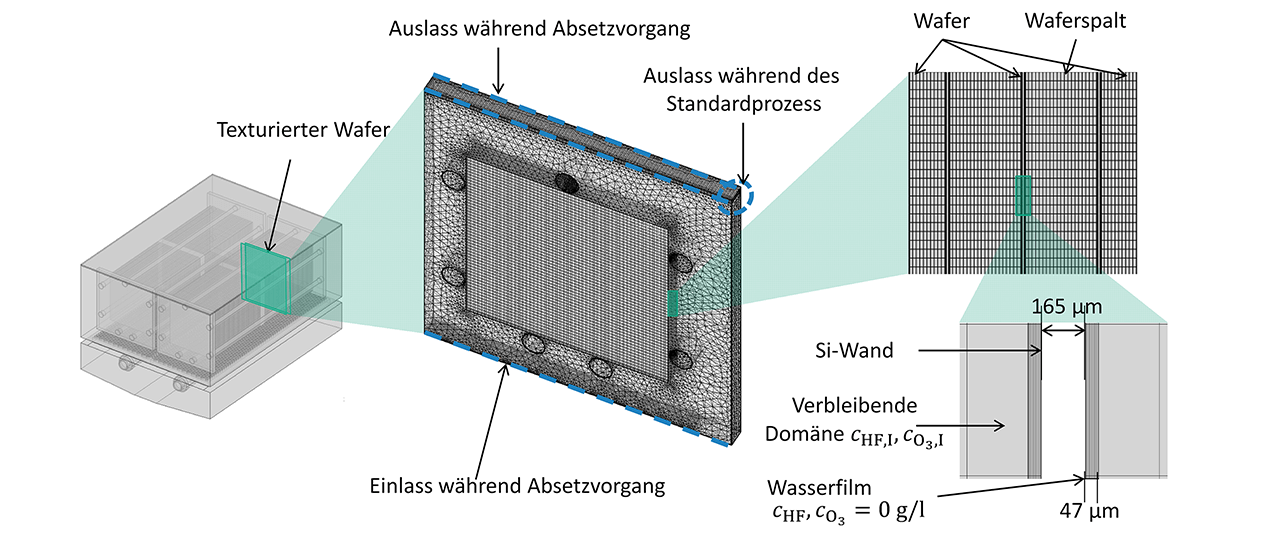
R&D Services for Process Simulations
In the research topic Silicon Photovoltaics we offer the following services in the field of fluid mechanics.
- coupled fluid mechanics and reaction kinetics
- Process engineering plant and reactor design including mass transfer, reaction kinetics and heat distribution
- root cause analysis for process failures or inhomogeneities
Application Example
Simulation of an Etching and Cleaning Process Based on Hydrofluoric Acid, Hydrochloric Acid and Ozone
In a cleaning basin, wafers are reworked after texturing using dilute hydrofluoric acid (HF), hydrochloric acid (HCl) and dissolved ozone (O3). In this process, the pyramid tips are rounded and the surface emitter is etched. These emitter etch back show an inhomogeneous etching behavior on the wafer surface, which cannot be explained by the present flow situation. While the flow in the basin initially runs from the bottom vertically upwards through the perforated plate, but then diagonally to the edges of the basin, vertical stripes were visible on the wafers, and the diagonal downflows in the upper area were not visible.
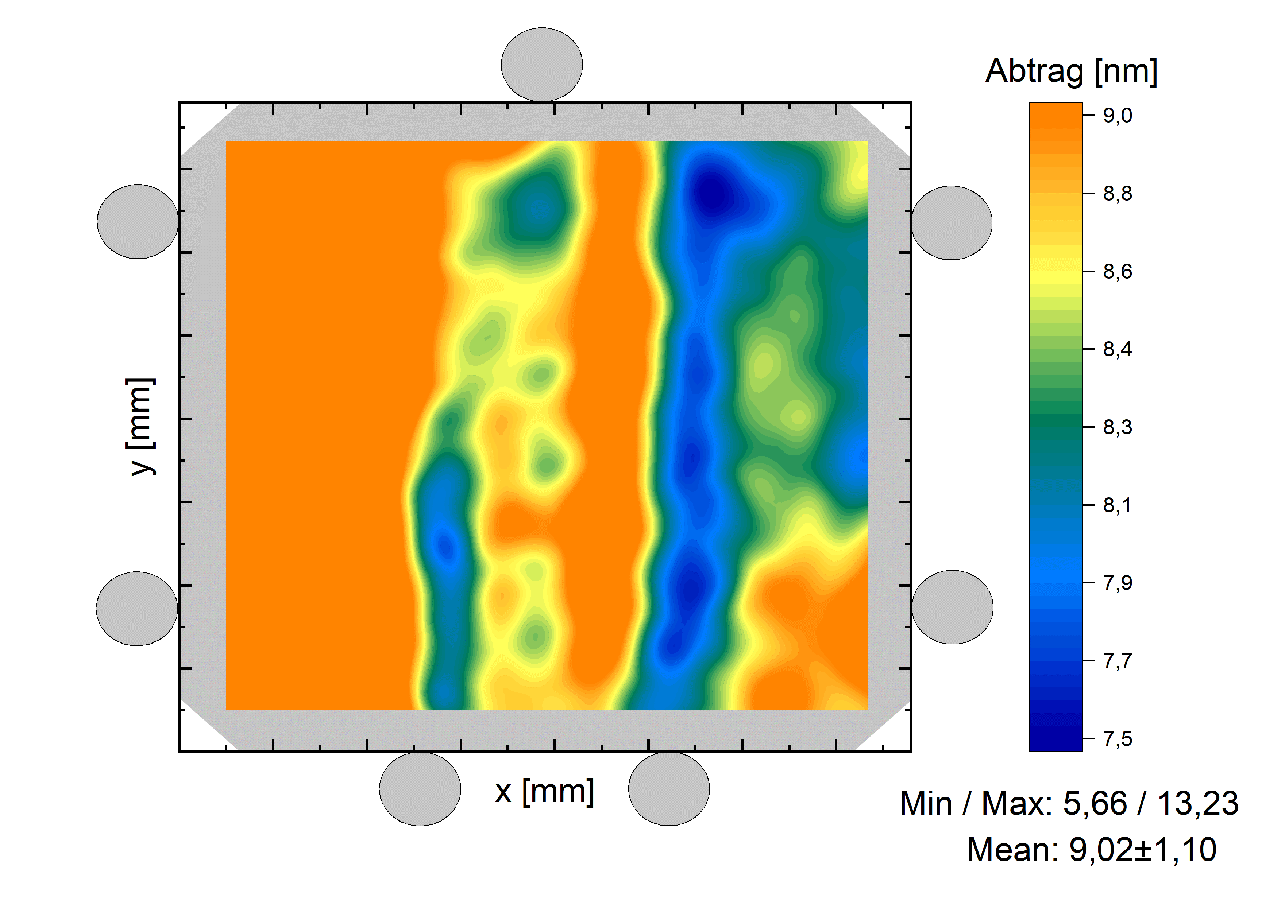
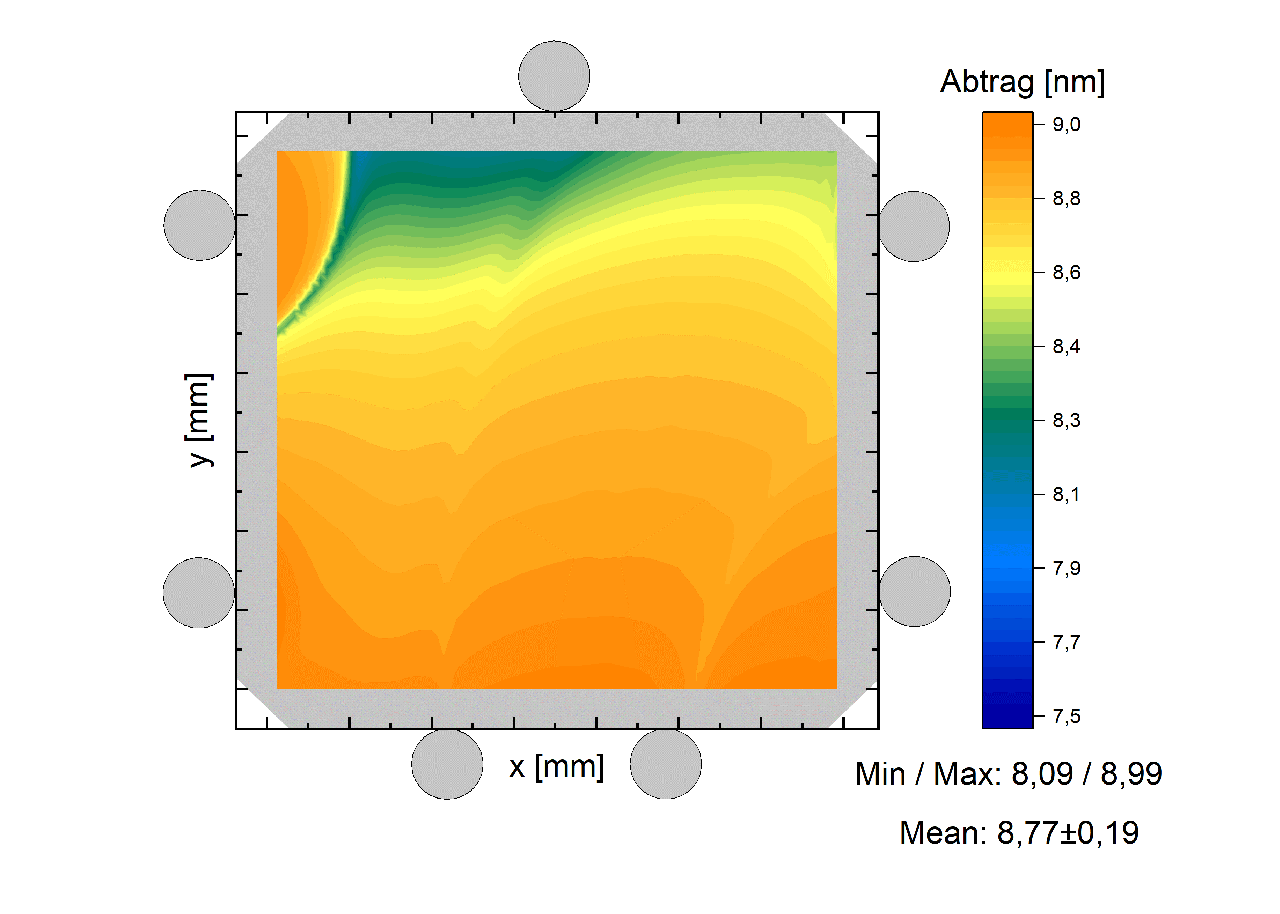
The cause of the inhomogeneity was now assumed to be that the hydrophilic wafers from a previous rinsing process are still covered with an approx. 50 µm thick water film. This film is sheared off during vertical immersion in the process basin (settling speed is 300 mm/s). At the points above the lower holding rods, however, this shearing is shadowed, so that there is still an aqueous intermediate layer in the process solution here between the wafer and the process solution. This intermediate layer must now first be broken through by diffusion and flow processes before the surface reaction can take place, so that the areas vertically above the holding rods exhibit weaker etching behavior than the remaining areas of the wafer.
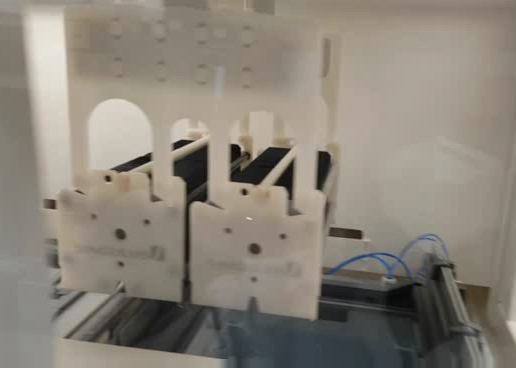
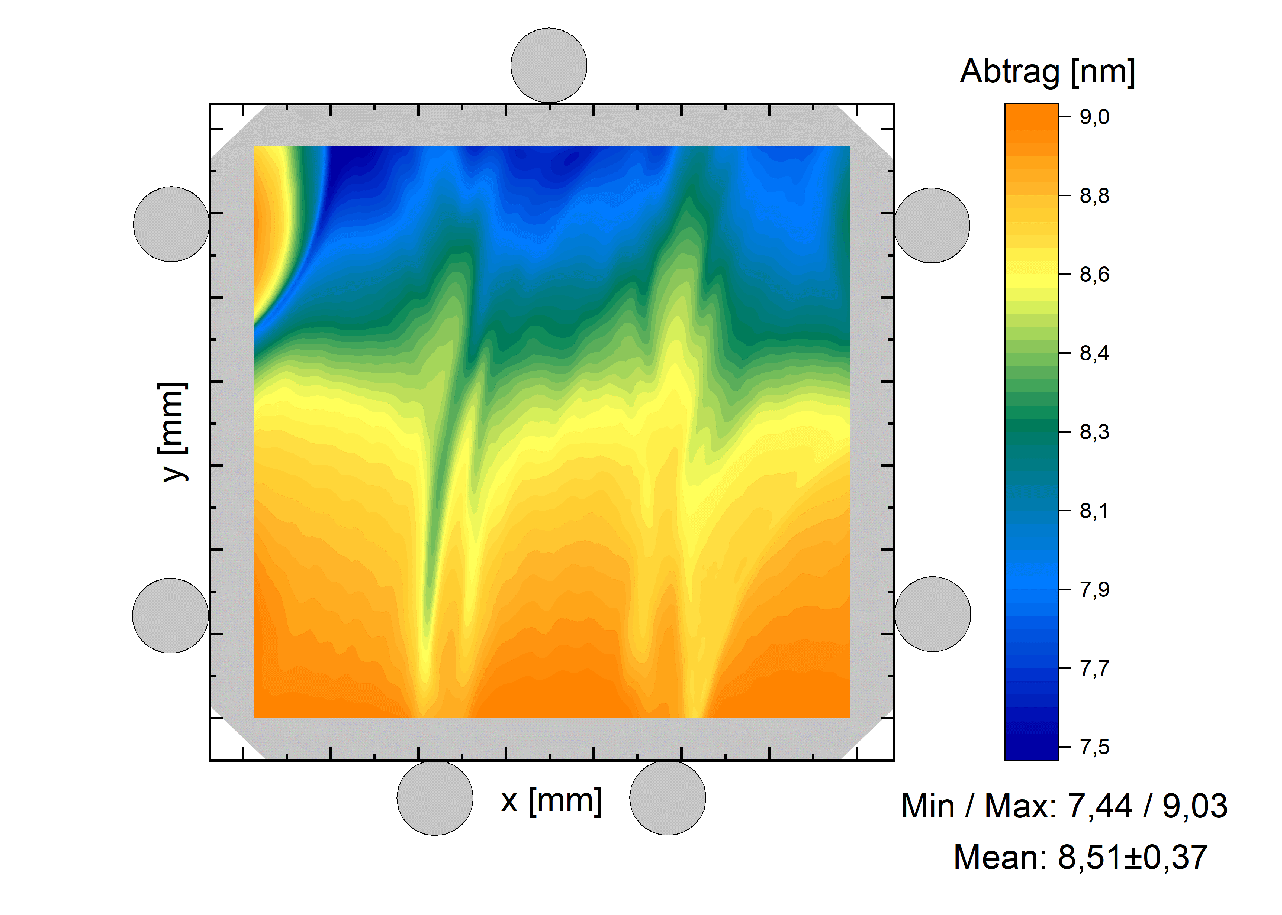
The process of immersion, the shearing of the initial water film and the associated delay in etching in the shadowed areas were integrated into the simulation. As a result, the vertically shadowed areas above the retaining bars become clearly visible. It was thus possible to identify a part of the process that initially appears to be incidental as the cause of process inhomogeneities. This effect can be counteracted by an extended draining time after the previous rinsing process and by reducing the settling speed.
Brief Description:
- Goal
- Clarification of causes for process inhomogeneities
- Reduction or elimination of causes to improve process homogeneity
- Procedure
- Simulation of etch removal as a function of flow, mass transport and surface reaction
- Integration of the settling process into the simulation
- Results
- Inhomogeneities are caused by a remaining water film from the previous rinsing process
- Identification and elimination of the cause